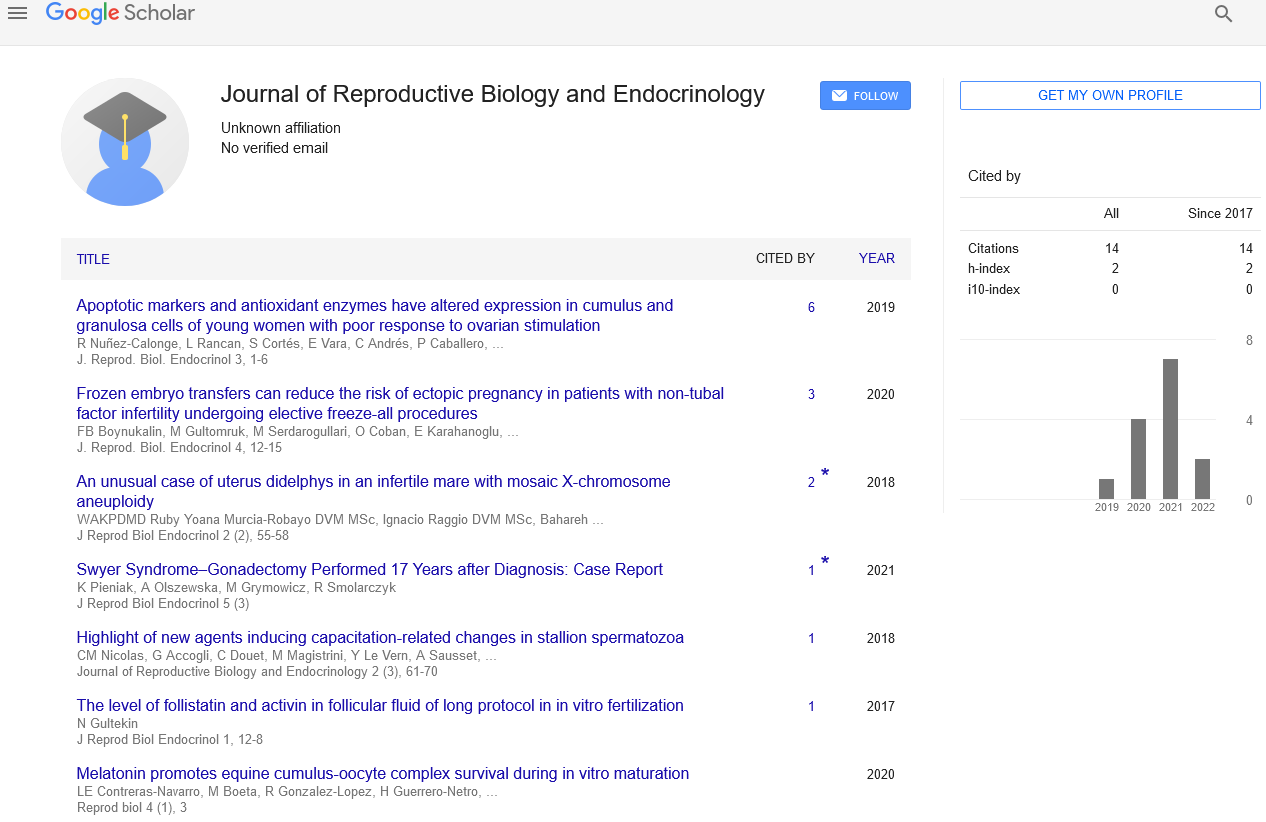Gynecologic oncology patient’s influence
Received: 02-May-2022, Manuscript No. PULJRBE-22-5176; Editor assigned: 05-May-2022, Pre QC No. PULJRBE-22-5176(PQ); Accepted Date: May 23, 2022; Reviewed: 18-May-2022 QC No. PULJRBE-22-5176(Q); Revised: 21-May-2022, Manuscript No. PULJRBE-22-5176(R); Published: 27-May-2022, DOI: 10.37532.2022.6.3.1-2
Citation: Williams R. Gynecologic oncology patient’s influence. J ReprodBiol. Endocrinol 2022;6(3)1-2.
This open-access article is distributed under the terms of the Creative Commons Attribution Non-Commercial License (CC BY-NC) (http://creativecommons.org/licenses/by-nc/4.0/), which permits reuse, distribution and reproduction of the article, provided that the original work is properly cited and the reuse is restricted to noncommercial purposes. For commercial reuse, contact reprints@pulsus.com
Introduction
Gynecologic cancers account for 20% of all female cancer survivors although representing just 10% of new instances of can- -cer in women. Nearly 10 million people have survived cancer as a consequence of advances in cancer treatment, and this number is anticipated to rise. Determining the most economical clinical surveillance for recurrence detection is therefore crucial. Unfortunately, there hasn't been much research done to determine the best surveillance methods to use after patients have fully recovered. At this time, the majority of recommendations are based on past research and professional judgment. Sexuality is a crucial component of life that is frequently impacted in cancer patients. Estimates of sexual dysfunction in women range from 40% to 100%. The capacity to identify gynecologic cancer recurrence at a stage that would affect cure or response rates to salvage therapy is improved only somewhat by routine cytology tests or imaging. The most recent information regarding surveillance for gynecologic cancer recurrence in women who have completely responded to primary cancer therapy will be reviewed in this article.
The use of the robot in gynecologic oncology has grown in a number of areas, including radical hysterectomy for cervical cancer patients as well as pelvic and Para-aortic lymphadenectomy, trachelectomy, simple hysterectomy, and oophorectomy. The majority of the articles are case series and investigative studies because the technology is still in its infancy. This is caused in part by a lack of training and in part by the oncologist's vague expectations for the primary care practitioner. Coordination of treatment between gynecologic oncologists, primary care physicians, other healthcare professionals (including radiation oncologists), and patients should ideally enable compliance with cancer follow-up care and regular health maintenance as survivorship rates continue to rise. It will be less expensive in the long run to do fewer unneeded tests if recommendations and duties of proper surveillance are made explicit.
The process of human sexuality is dynamic and multifaceted, integrating psychologic, biological, interpersonal, cultural, and behavioral elements. The chronic disease frequently has an impact on one's sexuality, and cancer patients are far more likely to have such issues. Many different things may have an impact on a woman's sexuality if she has cancer.
Breast cancer patients who undergo mastectomy surgery may experience issues with their body image, while ovarian cancer suspects who undergo oophorectomy surgery experience rapid menopausal symptoms like hot flashes and vaginal thinning. Systemic adverse effects of chemotherapy include exhaustion, nausea, and vomiting, which when combined can produce a decrease in libido and desire. Last but not least, the psychological trauma brought on by a cancer diagnosis itself may result in depressive symptoms, which may have a significant impact on one's sexuality.
We have a commitment to providing treatment across the cancer continuum as a program that focuses on women's cancers, and we recently made an investment in a program to address the sexuality, intimacy, and reproductive requirements of our patients. We were curious to learn how our colleagues felt and approached issues relating to sexuality and cancer before opening this clinic. The most frequent gynecologic cancer and the fourth most frequent cancer in women is endometrial cancer. In the US, 8000 people die from endometrial cancer each year and 44,000 new cases are diagnosed. Patients frequently report symptoms like abnormal or postmenopausal bleeding, which calls for additional examination with ultrasound scanning and/or endometrial sample.
Epithelial ovarian cancer patients typically have primary surgical staging surgery, either with or without adjuvant chemotherapy. Primary surgery's functions include advanced disease detection, staging, and tumor cytoreduction. The society of gynecologic oncologists and the american cancer society have jointly developed evidence-based recommendations for sending women with pelvic masses that may be signs of ovarian cancer to gynecologic oncologists. Although these suggestions encourage referrals to surgeons and other medical professionals with the necessary skills, more research is necessary to evaluate whether or not these experts may have an impact on the prognostic of ovarian cancer patients Each year, more than 12,000 women in the US receive a cervical cancer diagnosis. In 50% of patients, stage I illness is identified, and the 5-year survival rate for this population is higher than 90%. 6 Recurrence rates for this particular patient population are significant, though, averaging between 10 and 20%. The primary therapy employed and the site of the recurrence have a significant impact on how recurrent cervical cancer is treated. Patients with locally recurring illness may be given salvage therapy with a chance of recovery. Remote metastases are rarely curable. Patients who have successfully finished primary therapy have been encouraged to undergo surveillance in an effort to catch the disease at treatable stages.
Robotics-enhanced telesurgery is developing technology with a wide range of uses. Numerous case reports and series were found in the literature study, however, there were few randomized prospective investigations. A range of gynecologic malignancies was covered in the first case series. The majority of articles were written in the recent three years. There is no doubt that this is a young subject, and considerable study is still required to support its status as a recognized tool for use in gynecologic oncology.





